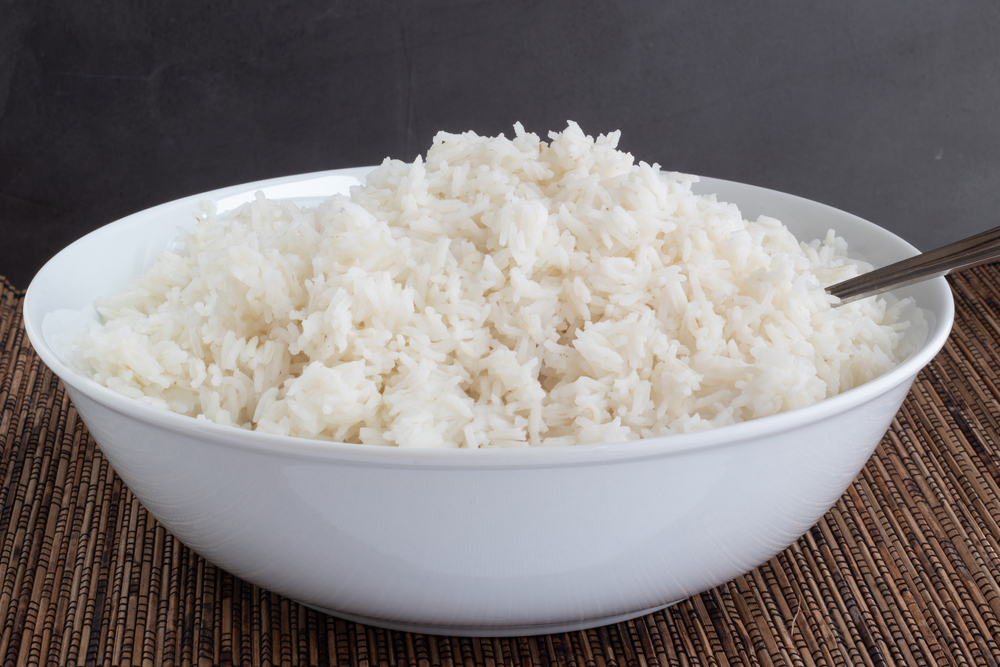The humble bowl of leftover rice sitting in your refrigerator might possess surprising health properties that fresh rice cannot claim. This ordinary leftover, often overlooked or discarded, undergoes remarkable changes during cooling and reheating that potentially transform its digestive impact and metabolic effects. The science behind these changes reveals how a simple kitchen practice might support better digestion and even contribute to weight management efforts.
The fascinating transformation of starch during cooling and reheating
Rice contains significant amounts of starch, primarily in two forms: amylose and amylopectin. These starches typically digest quickly after cooking, causing the characteristic blood sugar spikes associated with high-carbohydrate foods. However, something remarkable happens when cooked rice cools. As the temperature drops, some starch molecules reorganize themselves into a structure resistant to digestive enzymes, essentially transforming from rapidly digestible starch into what nutritionists call resistant starch.
This process, known as retrogradation, creates a form of carbohydrate that behaves more like dietary fiber than typical starch. When this cooled rice undergoes reheating, the resistant starch formation becomes even more pronounced, particularly if the cooling and reheating cycle occurs multiple times. The result is rice with substantially different digestive properties than its freshly cooked counterpart.
The transformed starch resists breakdown in the small intestine, traveling instead to the large intestine where it acts as a prebiotic—nourishing beneficial gut bacteria rather than being absorbed into the bloodstream. This shift in digestibility creates cascading effects throughout the digestive system and potentially beyond, influencing everything from satiety to glucose response.
How resistant starch fundamentally changes digestive processes
When resistant starch reaches the large intestine, it becomes fuel for beneficial gut bacteria. These microorganisms ferment the resistant starch, producing short-chain fatty acids including butyrate, acetate, and propionate. These compounds play crucial roles in digestive health, serving as the primary energy source for colon cells and helping maintain the intestinal barrier.
The fermentation process itself contributes to improved digestion through multiple mechanisms. The short-chain fatty acids produced during fermentation help regulate gut motility, potentially reducing constipation and improving overall digestive comfort. Additionally, these compounds create an environment that supports beneficial bacterial populations while discouraging pathogenic microorganism growth.
Butyrate, in particular, demonstrates impressive effects on digestive health. This short-chain fatty acid reduces inflammation in the intestinal lining, potentially alleviating symptoms for those with inflammatory bowel conditions. Its protective effects extend to the intestinal barrier itself, helping maintain the selective permeability that allows nutrient absorption while preventing harmful substance leakage into the bloodstream.
Beyond immediate digestive effects, the microbial changes stimulated by resistant starch consumption appear to influence broader aspects of metabolism. The gut-brain axis, which connects digestive function with neurological processes, responds to the altered microbial activity, potentially influencing appetite regulation and food intake through hormonal signals. This connection provides one pathway through which reheated rice might contribute to weight management efforts.
The metabolic advantages behind reheated rice consumption
Perhaps the most significant metabolic benefit of reheated rice comes from its modified impact on blood glucose levels. Fresh rice typically causes substantial blood sugar spikes followed by insulin surges as the body works to manage glucose levels. These dramatic fluctuations contribute to hunger, energy crashes, and over time, potential insulin resistance.
Reheated rice, with its increased resistant starch content, digests more slowly and incompletely. This gradual digestion results in a more moderate blood sugar response, creating smaller insulin demands and more stable energy levels. For those monitoring glycemic impact, research suggests that reheated rice may reduce blood glucose response by 15-30% compared to freshly cooked rice, a significant difference that could benefit anyone concerned about metabolic health.
The caloric availability from reheated rice also differs from fresh rice. Because resistant starch resists digestion in the small intestine, fewer calories get absorbed from the food. Estimates suggest that resistant starch provides roughly 2-3 calories per gram compared to 4 calories per gram for fully digestible starches. While this difference might seem modest, it accumulates meaningfully when resistant starch becomes a regular dietary component.
Beyond direct caloric differences, the satiating effects of resistant starch contribute significantly to its weight management potential. Foods rich in resistant starch tend to increase feelings of fullness while reducing hunger between meals. This satiety effect stems partly from the physical properties of resistant starch in the digestive tract and partly from hormonal changes triggered by short-chain fatty acid production during fermentation.
Research examining these hormonal effects has identified increased production of peptide YY and glucagon-like peptide-1, gut hormones associated with satiety and appetite reduction. Additionally, resistant starch consumption appears to reduce ghrelin levels, the hormone responsible for stimulating hunger. Together, these hormonal shifts create an internal environment more conducive to appropriate portion control and reduced snacking between meals.
The broader implications for metabolic and digestive health
The digestive and metabolic benefits of resistant starch extend beyond immediate effects on blood sugar and satiety. Emerging research suggests potential influences on fat metabolism and storage patterns. The short-chain fatty acids produced during resistant starch fermentation appear to reduce fat storage in adipose tissue while potentially increasing fat oxidation.
The anti-inflammatory properties of these fermentation products may also contribute to improved metabolic health by reducing the chronic inflammation associated with obesity and metabolic syndrome. This systemic anti-inflammatory effect potentially creates more favorable conditions for maintaining healthy weight and metabolic function over time.
Digestive health benefits continue accumulating with regular resistant starch consumption. The prebiotic effects support diverse and robust gut microbiome development, which increasingly appears fundamental to overall health. A balanced microbiome influences digestive function, immune response, and even mental wellbeing through complex biochemical pathways still being uncovered by researchers.
For those concerned about digestive discomfort, resistant starch offers a unique advantage over other fiber types. While many high-fiber foods cause bloating or gas, particularly when first introduced to the diet, resistant starch typically produces less digestive distress while still providing fiber-like benefits. This gentle action makes it particularly suitable for those with sensitive digestive systems seeking to improve their fiber intake.
The potential long-term benefits for metabolic health appear especially promising. Regular consumption of resistant starch-rich foods correlates with improved insulin sensitivity, better lipid profiles, and reduced risk factors for metabolic syndrome. While not a panacea, these effects suggest resistant starch deserves consideration as part of comprehensive approaches to metabolic health maintenance.
Practical approaches to maximizing resistant starch formation in rice
Creating resistant starch in rice requires understanding the factors that influence its formation. Temperature plays a critical role, with cooling being essential to the retrogradation process. After cooking rice normally, allowing it to cool completely before refrigeration maximizes the initial resistant starch formation. Ideally, cooked rice should reach room temperature before being transferred to refrigeration at 40°F (4°C) or below.
The duration of cooling also influences resistant starch content. Research indicates that allowing rice to remain refrigerated for at least 12 hours significantly increases resistant starch formation. Longer cooling periods of 24-36 hours appear to produce even greater resistant starch content, suggesting that preparing rice a day or two ahead of intended consumption offers optimal benefits.
The reheating process itself influences final resistant starch content. Gentle reheating methods that maintain some moisture, such as steaming or adding a small amount of water before microwaving, help preserve the resistant starch formed during cooling. Excessively high temperatures or prolonged reheating may reverse some resistance, so minimal heating to reach food-safe temperatures works best.
Rice variety significantly affects resistant starch potential. Generally, long-grain varieties with higher amylose content, such as basmati and jasmine rice, develop more resistant starch during cooling than short-grain, sticky varieties. This difference stems from the molecular structure of amylose, which forms more stable crystalline structures during retrogradation than the branched amylopectin predominant in sticky rice varieties.
Food safety considerations remain paramount when implementing cooling and reheating practices. Cooked rice should never remain at room temperature for more than two hours to prevent bacterial growth. Once cooled, refrigerated rice should be consumed within three to four days, and reheated only once to a temperature of at least 165°F (74°C) throughout.
Incorporating reheated rice into balanced eating patterns
Reheated rice offers versatility that extends beyond simply warming leftovers. The culinary possibilities allow for creative integration into diverse eating patterns. Dishes like fried rice traditionally use day-old rice specifically because its texture improves after cooling and reheating, making this preparation method both culinarily desirable and nutritionally advantageous.
Rice salads provide another excellent application for cooled rice. Combining chilled rice with vegetables, proteins, and dressings creates satisfying meals that maintain the resistant starch benefits without requiring reheating. These preparations work particularly well for packed lunches or warm-weather meals when cold dishes prove more appealing.
For those seeking maximum metabolic benefits, combining reheated rice with other metabolism-supporting ingredients creates synergistic effects. Adding healthy fats like olive oil or avocado slows digestion further, while incorporating vinegar or citrus juice appears to enhance the resistant starch effects through pH modification. Combining these approaches potentially maximizes the metabolic advantages beyond what resistant starch alone provides.
The cultural traditions supporting these practices deserve acknowledgment. Many culinary traditions worldwide have incorporated rice cooling and reheating for generations, suggesting ancestral wisdom about the improved digestibility or satisfaction provided by reheated rice. From Chinese fried rice to West African jollof, these cultural practices likely recognized the benefits of reheated rice long before modern nutritional science could explain them.
While reheated rice offers potential benefits for digestion and weight management, context matters significantly. The overall dietary pattern surrounding rice consumption ultimately determines health outcomes more than any single preparation method. Reheated rice provides one tool within comprehensive approaches to nutrition that consider overall food quality, variety, and appropriateness for individual needs.
The seemingly simple act of cooling and reheating rice reveals sophisticated nutritional biochemistry with meaningful implications for digestive and metabolic health. This accessible kitchen technique transforms an everyday staple into a functional food with properties that potentially support better digestion, improved satiety, and more stable blood sugar levels. As research continues exploring resistant starch effects, this traditional practice offers a promising, practical approach to enhancing the nutritional quality of a global dietary staple.














